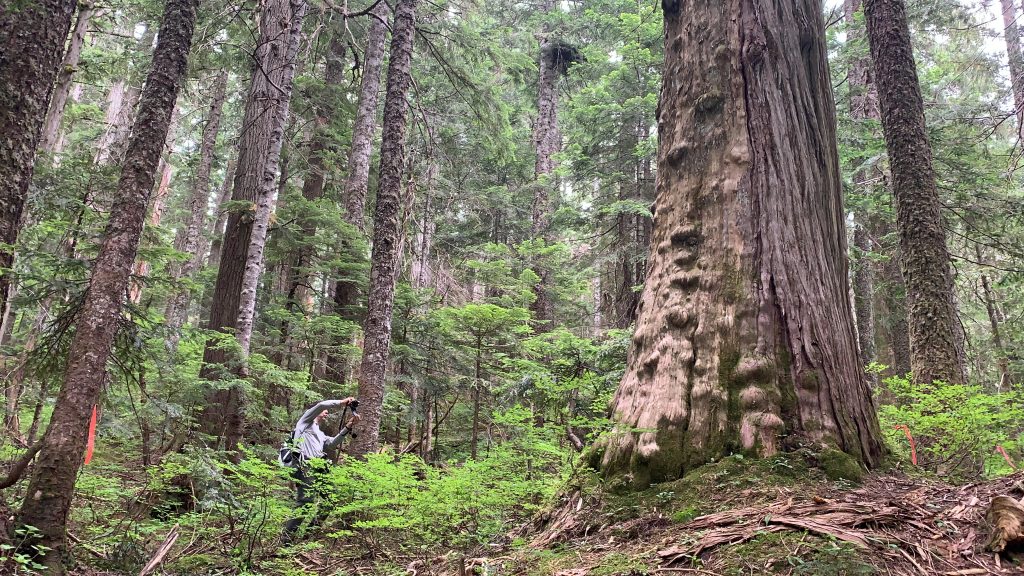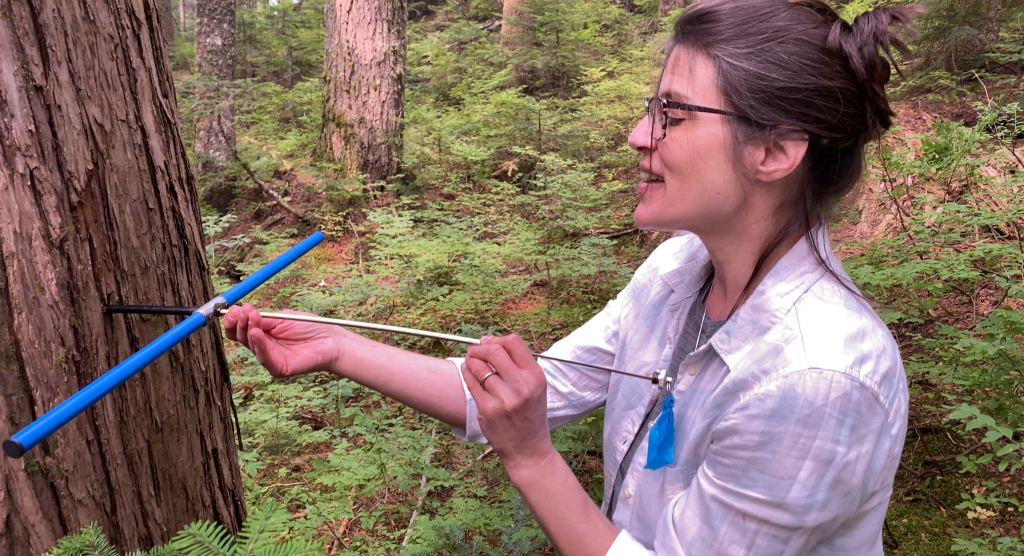Explore an ancient mountaintop forest in Sḵwx̱wú7mesh Úxwumixw (Squamish Nation) territories on the Sunshine Coast, British Columbia, Canada.
This undisturbed forest in the Dakota Community Watershed boasts thousand-year-old cedars and 77 registered Sḵwx̱wú7mesh Úxwumixw archaeological sites where yellow cedars were stripped for their fine inner bark, and continued on living.
Xwechtáal (Dennis Joseph) shares stories and knowledge of the area from the Sḵwx̱wú7mesh Úxwumixw, who have lived in the watersheds surrounding Mount Elphinstone for thousands of years.
SUPPORT MY WORK ON PATREON & CONNECT WITH EXCLUSIVE ART & NEWS
Registered professional bear biologist Wayne McCrory notes its unusual density of active black bear dens. Coastal black bears rely on old growth trees for winter denning, and McCrory speculates that loss of suitable denning habitat in the surrounding Mount Elphinstone area is leading to unusual accumulations of den sites in higher elevations.
Meanwhile, culturally modified trees from hundreds of years ago are slowly succumbing to heart rot, and creating the next generation of den sites for black bears of the future.
The Dakota Bear Sanctuary was twice proposed for logging by BC government agency BC Timber Sales. It received a one-year deferral by the NDP government in October 2020, days before the provincial election.
Ross Muirhead and Hans Penner of Elphinstone Logging Focus campaigned for years against the Dakota blocks. In summer 2020, they teamed up with The Living Forest Institute to host tours and events in the forest. The Only Animal also organized artists to explore the ancient forest in various artistic mediums.
Gibsons resident Robyn Jacques created a change.org petition that reached 50k signatures at the time of publishing, which she sent to Sunshine Coast-Powell River MLA Nicholas Simons, a cabinet member in the John Horgan NDP government.
UPDATE from the Squamish Nation:
March 1 2021
“The Squamish Nation is pleased to announce that it has entered into an agreement with the Province of British Columbia that protects the Dakota Bowl area on the Sunshine Coast from timber harvesting (logging), now and in the future.
The Nation and the Province are working together on options for land use that recognize the significance of this area, which has been used and occupied by Skwxwú7mesh Úxwumixw since time immemorial. This could include, for example, making Dakota Bowl an Old Growth Management Area, a Wildlife Habitat Area or a Squamish Nation Area of Interest.”


